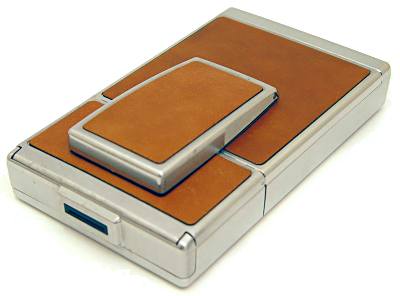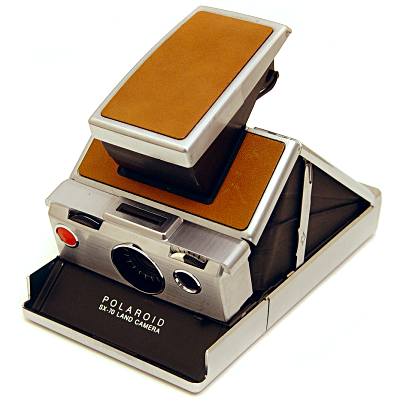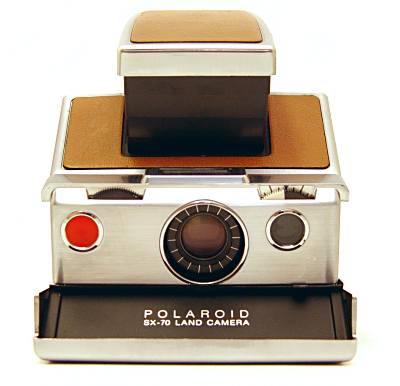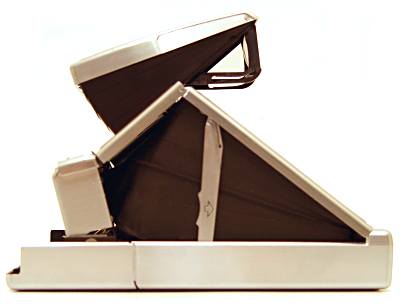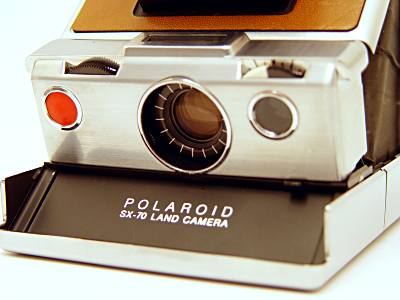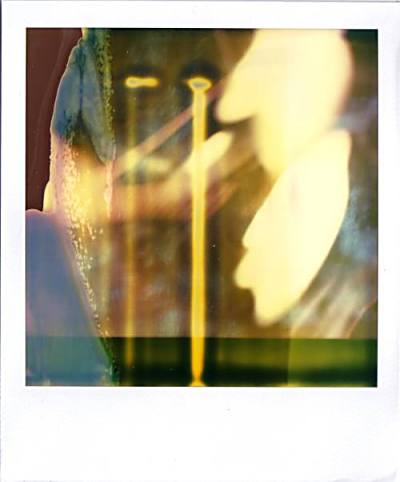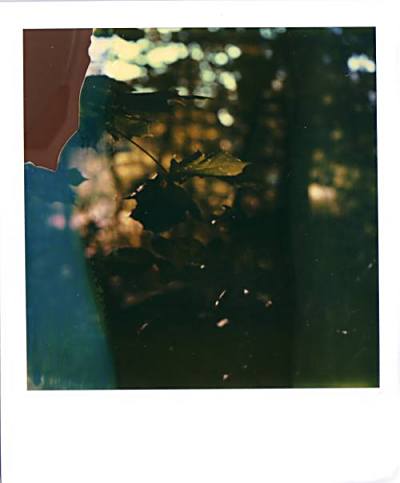|
The Polaroid SX-70 was released in 1972. It is a folder in a revolutionary stylish design with light-brown leather insets in a brushed aluminum body. Folded its thickness is only 2.8cm. It is not a pocket camera though, since the lateral dimensions are larger than the average pocket and the weight is a solid 680g without film. It is opened pulling the little protruding housing, the viewfinder cap, upwards - the camera pops up into an odd shape showing all kinds of angles. On the front panel the lens, the focusing wheel, a lighten/darken control wheel, and the characteristic orange shutter release button occur. From the side, the bellows protecting the film chamber can be seen. The SX-70 is a true SLR camera. The viewfinder image is seen through the objective lens and hence shows exactly what will be on the film. The camera is focused via a split-image circle in the finder. The focal length of the lens is not specified on the camera. Looking through the finder, it seems that the it is somewhat longer than a "normal" lens. I estimate the focal length as 190mm or so, which is equivalent to a 60mm lens of a 35mm camera. (The format of the image is 8.8cm x 10.7cm, i.e. the equivalent to a 50mm normal lens for a 35mm camera is 160mm). The speed of the lens is not specified as well, but a value wouldn't help much anyway, since neither the exposure time nor the actual aperture are communicated to the user. Hence you have to leave all decisions to the camera. The photographer can interfere by turning the lighten/darken control wheel next to the lens. Turning the wheel such that more of the white area is visible results in a lighter picture and vice versa. It is unclear however, if the scale marks on the wheel have something to do with the number of stops compensated for. Karen Nakamura writes on her website that the lens is a four element glass lens with an aperture range from f/8 to f/22. Note that the SX-70 does not need an extra battery for operation. To be more precisely, a 6V battery is included in the film pack. This procedure ensures that with every film new batteries are entered, which is an important issue with this type of camera since the battery power is required for the motor ejecting the picture. With this camera for the first time a self-contained film was introduced. With the SX-70 film, the user does no longer have to peel apart film-plate sheets and mess arount with sticky and poisonous developer residues. The developer is contained in a little bag below the image area (this is why the lower white border of a polariod image is broader than the others), and it is squeezed onto the film by two well-aligned rollers when the picture is ejected. The surface of the image is permanently well protected by the transparent outer cover sheet. The SX-70 can be used with a (discontinued) flash bar to be attached above the lens. When the flash is attached the focusing distance couples to the exposure values. There is a later SX-70 model which looks awfully weird because of a huge sonar autofocus detector element above the lens. When I obtained my SX-70 I found a more than 30 year old film in it. I was highly surprised to see that it was still possble to produce pictures, even the battery still hat enough power. The results are seen on the right. Obviously contrast and brightness are a little low, the colors are brownish and the developer could not be distributed evenly over the picture. Nevertheless, I have seen much worse Polaroid pictures... Links Here is the manual
|
|
